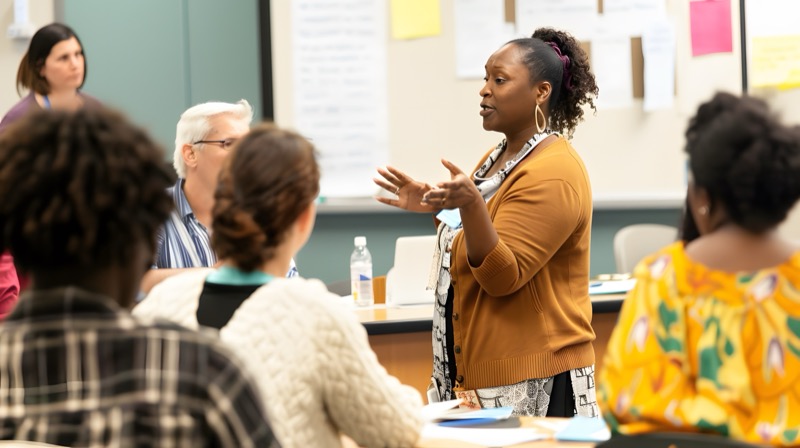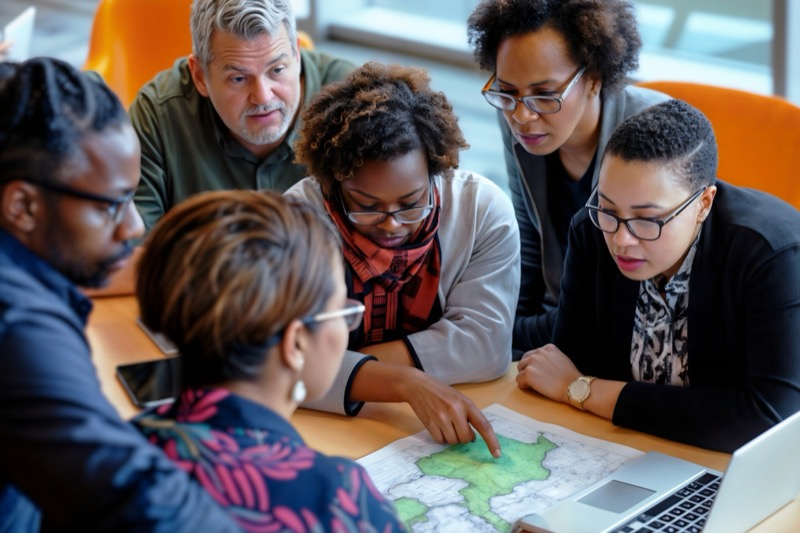Open Educational Resources (OER)—free and publicly available materials for teaching and learning—are revolutionizing higher education. They offer invaluable tools that empower educators and enhance students’ academic journeys. These carefully curated, adaptable resources alleviate student financial burdens and foster a more inclusive learning experience. As instructors investigate innovative strategies for enriching course content and boosting accessibility, OER opens a world of possibilities. Let’s explore some powerful ways OER supports students and faculty!
OER empowers educators to customize course content to align perfectly with specific learning objectives. Instead of settling for a one-size-fits-all textbook, faculty can blend resources from diverse OER sources, ensuring the curriculum reflects the latest advancements in their field while catering to their students’ unique needs. This flexibility fosters a curriculum that is relevant and genuinely engaging.
Consider a history professor who adapts an OER textbook to include case studies relevant to their region or skillfully removes sections that don’t align with their course focus, crafting a resource that directly supports their educational goals.

The escalating prices of traditional textbooks and digital learning solutions can pose challenges for students, impacting their overall learning experiences. Fortunately, OER removes this financial strain by providing free, openly licensed materials that educators can easily adopt or customize. By integrating OER into your courses, you can help create a more affordable educational landscape, allowing students to immerse themselves fully in their studies without the stress of hefty bills.
When students no longer need to spend hundreds of dollars on expensive textbooks, individuals from all income backgrounds can pursue their education more easily. This financial relief helps level the playing field, enabling more students to achieve their academic goals without the burden of financial barriers.
By embracing OER, educators can venture beyond traditional resources and explore a wealth of multimedia formats, such as videos, simulations, and interactive activities. This rich variety not only makes courses more dynamic and enjoyable but also helps students connect with the material in fresh and exciting ways.
A psychology course could benefit from interactive simulations illustrating intricate concepts like cognitive biases, providing students with hands-on experiences that deepen their understanding of the theoretical material.

OER nurtures an enriching culture of collaboration by allowing educators to share modified materials with their colleagues. This spirit of cooperation not only encourages knowledge sharing within departments but also extends across institutions, fostering a vibrant network of educators continually refining and enhancing each other’s work. By collaborating and sharing resources, faculty contribute to a dynamic teaching environment that benefits everyone involved.
A sociology professor might collaborate with peers from other universities to create a series of case studies that leverage the unique insights of each contributor, resulting in a comprehensive and diverse resource.
OER nurtures an enriching culture of collaboration by allowing educators to share modified materials with their colleagues. This spirit of cooperation not only encourages knowledge sharing within departments but also extends across institutions, fostering a vibrant network of educators continually refining and enhancing each other’s work. By collaborating and sharing resources, faculty contribute to a dynamic teaching environment that benefits everyone involved.
A sociology professor might collaborate with peers from other universities to create a series of case studies that leverage the unique insights of each contributor, resulting in a comprehensive and diverse resource.

In contrast to traditional textbooks, which can take years to revise, OER can be updated frequently, ensuring that course content remains cutting-edge and aligned with the latest developments in a field. However, it is important to regularly review OER materials to ensure they are free of errors or discrepancies. This diligence, combined with the flexibility of frequent updates, guarantees that students learn from materials reflecting contemporary knowledge and best practices.
Take a rapidly evolving field like computer science; instructors can readily incorporate new programming languages or recent technological advances into their curriculum without the long wait for a new textbook edition!

By eliminating textbook costs and enhancing accessibility, OER inherently promotes equity in education. When every student gains immediate, free access to learning materials from the very first day of class, no one faces disadvantages due to financial limitations.
Furthermore, the flexibility of OER allows educators to address their students’ diverse needs and experiences, creating content that resonates across various backgrounds and learning styles.
Through OER, teachers can cultivate a more inclusive classroom, ensuring every student has an equal opportunity to thrive.
Incorporating OER into your courses creates an accessible, affordable, and personalized learning environment that enhances engagement and delivers students a cost-effective learning experience. Discover how to effectively identify, evaluate, and integrate OER into your course by completing ACUE’s new Quick Study, Integrating Open Educational Resources.
By eliminating textbook costs and enhancing accessibility, OER inherently promotes equity in education. When every student gains immediate, free access to learning materials from the very first day of class, no one faces disadvantages due to financial limitations.
Furthermore, the flexibility of OER allows educators to address their students’ diverse needs and experiences, creating content that resonates across various backgrounds and learning styles. Through OER, teachers can cultivate a more inclusive classroom, ensuring every student has an equal opportunity to thrive
Incorporating OER into your courses creates an accessible, affordable, and personalized learning environment that enhances engagement and delivers students a cost-effective learning experience. Discover how to effectively identify, evaluate, and integrate OER into your course by completing ACUE’s new Quick Study, Integrating Open Educational Resources.